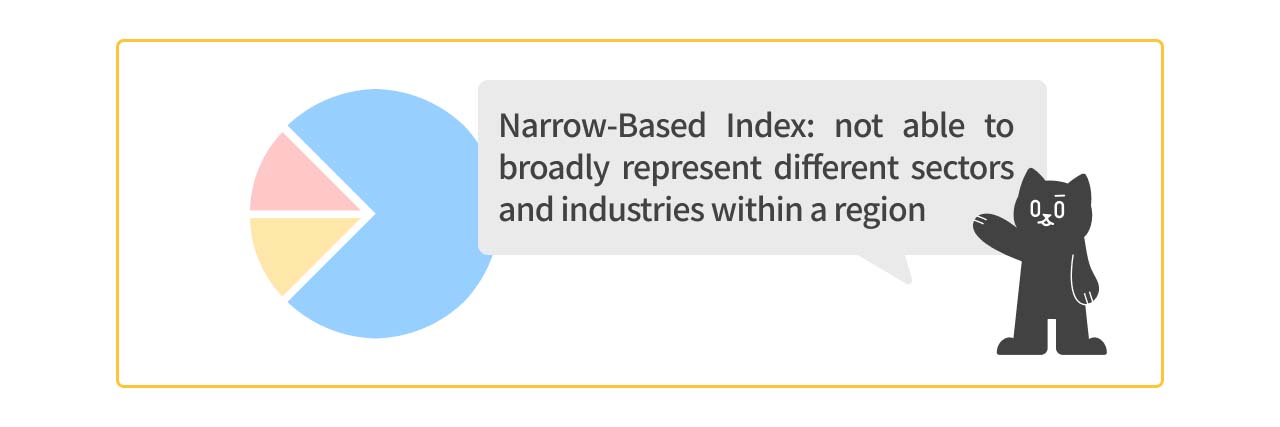What is a Narrow-Based Security Index?

Narrow-Based Index Components are Typically Concentrated
A Narrow-Based Security Index refers to an index that is not able to broadly represent different sectors and industries within a region. In simpler terms, a narrow-based index is dominated by a small number of constituent stocks, which are often concentrated in specific and similar sectors.
Definition of Narrow-Based Index
According to the U.S. Commodity Futures Trading Commission (CFTC), an index is classified as narrow-based if it meets any of the following conditions:
- The index contains 9 or fewer constituent stocks.
- Any single constituent stock accounts for more than 30% of the index weight.
- The top 5 constituent stocks make up more than 60% of the index weight.
- The total dollar value of the Average Daily Trading Volume (ADTV) of the lowest-weighted constituents representing 25% of the index weight is less than $50 million (or $30 million if the index contains 15 or more securities).
Narrow-Based vs. Broad-Based Index
| Narrow-Based Index | Broad-Based Index | |
|---|---|---|
| Difference | Dominated by a few stocks; fewer components or over-concentrated in similar sectors | Any non-narrow-based index; generally has more components and covers a wider range of industries |
Different from narrow-based index, a broad-based index is not explicitly defined by the CFTC but is generally the indexes that are not classified as narrow-based. Broad-based indexes typically have more constituent stocks or cover a broader range of industries. A common example is the Dow Jones Industrial Average, which includes sectors like manufacturing, finance, and technology.
Restrictions on Narrow-Based Indexes
Under the U.S. Commodity Exchange Act (CEA), if an index shows that a single constituent stock accounts for more than 30% of its weight for more than 45 trading days within a 3-month period (about 75% of trading days), it will be classified as a narrow-based index. To prevent manipulation in financial markets and maintain fairness, the CFTC restricts U.S. investors from trading narrow-based index futures.
Current Status of the Taiwan Stock Exchange Weighted Index
TSMC’s Surge Might Lead to the Reclassification of the TAIEX as a Narrow-Based Index
A few weeks ago, Taiwan’s Financial Supervisory Commission (FSC) announced that due to TSMC’s continued rise this year, Taiwan Index Futures would be classified as a "narrow-based index future." According to the Securities and Futures Bureau, by the end of April, TSMC’s weight had exceeded 30% on 46 trading days over the past 3 months, meeting the criteria for a narrow-based index. However, as U.S. investors account for only a small proportion of futures trading in Taiwan, and many U.S. institutional investors have overseas subsidiaries to bypass the U.S. restrictions, the overall impact of the reclassification is expected to be minimal.
Historically, the Taiwan Stock Exchange was also classified as a narrow-based index in April 2021 and was not removed from the list until October 2022. During that period, the market fell by 20%. This historical context has led to some concern among investors as TSMC’s influence once again brings the index under scrutiny.
